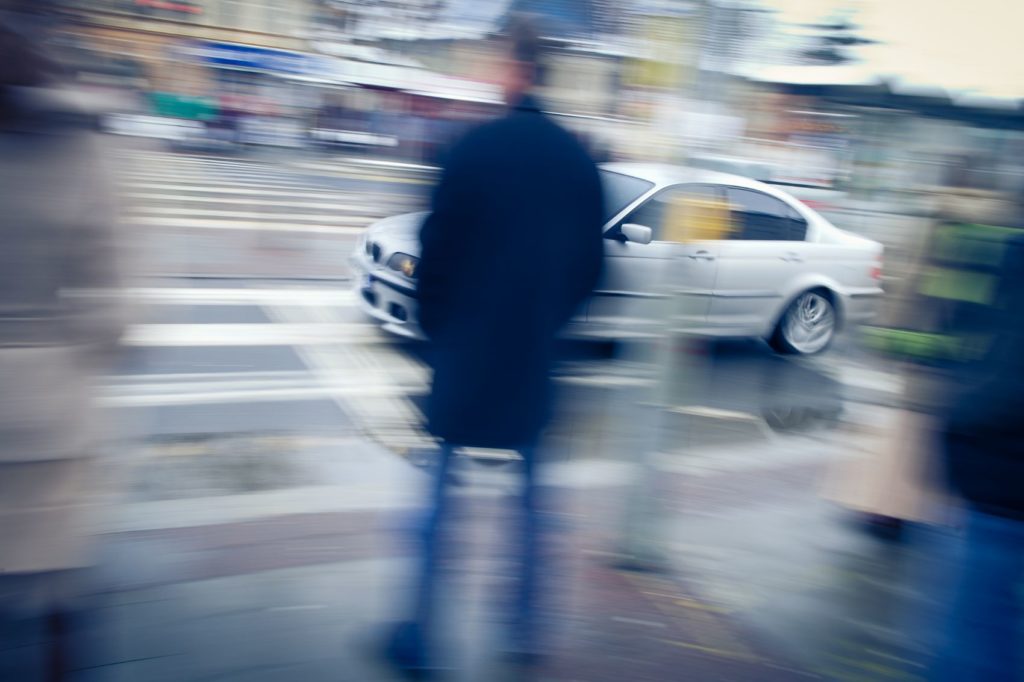Going for walks here in downtown Detroit is one of my favorite pastimes. Even with the uncertainty of a pandemic, downtown Detroit is still a hub of art, food, and culture (or as best can be expected given the circumstances of COVID-19). As I enjoy the fall air in our mighty Motor City, I always follow the advice I received years ago while growing up in a small rural farming community.
Always look both ways before crossing the street.
New Vantage Point
I’ve spent the last few weeks getting to know and understand what I call “the other side” of HARMAN (or at least the other side as far as my experience was concerned). Of course, the company’s audio equipment immediately comes to mind, thanks to my days in commercial radio. Over at Automoblog, our sister publication, we cannot mention any Lexus vehicle without saying how much we enjoy the Mark Levinson stereo. Barring that, almost every audiophile I know loves a good Harman Kardon system.
But recently, I’ve had the opportunity to become immersed in HARMAN’s connective car initiatives – or what has become the other side of the company to me. I was given the occasion to see a virtual demonstration of HARMAN’s connected car ecosystem and, in particular, its application of Vehicle-to-Pedestrian and Vehicle-to-Everything (V2X) technology.
“Vehicle-to-Pedestrian technology is a use case, and it’s a use case for the Vehicle-to-Everything or vehicle-to-infrastructure signalling,” explained Roger Jollis, Senior Director, Marketing & Product Management, HARMAN Telematics. “We say ‘use case’ because there are many use cases for V2X that have been defined as what we call ‘day one’ use cases, including things like blind-spot identification and passing emergency vehicles.”
At CES 2020 last January, HARMAN performed demonstrations of the Vehicle-to-Pedestrian use case. By employing V2X technology, Vehicle-to-Pedestrian alerts both drivers and pedestrians to any potential dangers and conflicts. According to HARMAN, the way to maximize Vehicle-to-Pedestrian effectiveness is via 5G-fueled cellular vehicle-to-everything (C-V2X) networks.
“We did some demonstrations at CES with Dedicated Short Range Communications,” Jollis said. “But in reality, it’s more likely to be a C-V2X implementation because the baseband processors that are used in mobile phones will most likely have C-V2X capability.”
Building a Beacon Community
Vehicle-to-Pedestrian uses low latency 5G peer-to-peer signals to identify objects and other road users in the vehicle’s path through proximity scanning. For example, a driver navigating a busy city street will receive a notification inside their vehicle, alerting them to a pedestrian who may be in their immediate path. Likewise, a pedestrian or cyclist will also receive an alert that warns them about an approaching vehicle, provided they have a C-V2X-enabled mobile device. Through these simultaneous alerts, drivers and pedestrians are more likely to be aware of each other in closer quarters, and both can take action to avoid the other.
“V2X operates as a beacon community,” Jollis explained. “Essentially, members of the V2X community will be broadcasting their location, direction of travel and speed, and their identification and type of entity that they are, be it a car, bike, or mobile phone.”
The applications for Vehicle-to-Pedestrian are nearly endless, and it doesn’t take long to think of one. Imagine a vibrant downtown metro during morning rush hour: people walking in and out of office buildings; trucks pulling over to unload and make deliveries; cars and buses squeezing through the same tight streets with vehicles parked on both sides; work crews trying to move heavy machinery around the building they are renovating. And so on.
According to HARMAN, Vehicle-to-Pedestrian is well-suited for such environments and will provide notifications to motorists and pedestrians regardless of how busy or noisy the scene is. Unlike a camera, which cannot see around corners, or through that stopped delivery truck, Vehicle-to-Pedestrian operates more like an “eye in the sky,” and can issue alerts regardless.
“Now, there are still some limitations to this,” Jollis explained. “The first major limitation is the number of participants in the V2X community. There are very few manufacturers outfitting their vehicles with V2X. And some of those are not even using C-V2X, but rather they’re using DSRC. We need a much larger participation in order for this to become a successful use case. And that means not just in the car, but also in our mobile phones.”

The Discerning Eye
One of the ongoing challenges is deploying Vehicle-to-Pedestrian as that proverbial eye in the sky. In other words, even if you can see everything, not everything you see is relevant. “The challenge in the dense urban environments is the many beacons that are being trapped, submitted, and received in a very close space, and the need to filter those can become problematic if you don’t have enough processing power to do the filtering,” Jollis said.
The concern is maintaining the accuracy of the beacons and alerts while not overloading the vehicle’s processing capabilities or draining down a pedestrian’s phone battery. Overcoming that challenge, according to Jollis, is a primary goal for HARMAN.
“One way to do this is to use another technology that HARMAN is beginning to engage in, and that is what we call roadside units,” he explained. “These are infrastructure elements that also communicate with the communities, mobile phones, and vehicles in a peer-to-peer way. And for HARMAN, it’s a natural expansion of our business because the technology is not much different than what’s in the car, it just resides in a static place.”
The roadside units share the technical workload and help filter notifications and alerts according to their relevancy. “You can offload the computing requirements to these roadside units and then simply transmit, on a peer-to-peer basis, the warnings directly to the participants that are involved,” Jollis continued.
For example, say you are standing on the street waiting to cross, and a vehicle is approaching from the left. There may, indeed, be another car coming from the right, but it might be several blocks away. It could be moving slowly for whatever reason, say in preparation to stop at a red light. By contrast, the vehicle from the left is continuing at its normal pace.
In this situation, the vehicle approaching from the left is the primary concern for you as the pedestrian. Similarly, as you stand on the street corner, you are more of an immediate concern to the driver approaching from the left than the driver from right, who is still several blocks away. For Vehicle-to-Pedestrian to be truly effective, the correct alerts must go to the correct people at the correct time.
“You don’t want to look to the right for the car that’s coming from the left as that would not be a relevant alert,” Jollis said. “That would be addressed in a peer-to-peer format directly to the participating beacon user. And it would be modified locally on that device.”

The Case for 5G
In December 2019, HARMAN showcased their work with FCA during a live demonstration on Intersection Movement Assist and Forward Collision Warning with a C-V2X-capable Maserati Levante and Quattroporte. The demonstrations were part of the 5G Automotive Association (5GAA) annual event in Turin, Italy.
According to HARMAN, managing the vast amount of data and corresponding transfer speeds is necessary for V2X systems to reach their peak operating performance. When higher levels of in-vehicle connectivity, more advanced ADAS systems, and full-on autonomy enter the picture, things become more complicated. If disruptions exist within the network, pedestrian safety is compromised, which means a move to 5G is paramount from HARMAN’s perspective.
“The coming of 5G equates to a significant generational shift in network connectivity as 4G simply won’t be able to handle the increased data,” said Vishnu Sundaram, Vice President of the Telematics Business Unit for HARMAN and 5GAA Board Member. Sundaram was speaking to attendees on-site during the 5GAA event last December.
“Soon enough, vehicles will become connected information hubs, with the ability to communicate with other cars and its surroundings,” he continued. “Delivering alerts to drivers and other vehicles as quickly as possible and taking advantage of automated safety features such as Forward Collision Warnings and Intersection Movement Assist will be necessary to ultimately make roadways safer and more convenient for everyone.”
“In the past, with 4G and earlier technologies, there wasn’t a peer-to-peer communications capability,” Jollis added. “Latencies were substantially longer between the time a message goes out and the time it’s received, and therefore it interferes with the safety aspect required for use cases like Vehicle-to-Pedestrian.”

No Shark Fins Allowed
Like the roadside units, HARMAN has already started benchmarking one of the fundamental physical components of the V2X ecosystem. However, this one doesn’t reside within the infrastructure as the roadside units do. This one hitches a ride on the vehicle instead.
During the We’re All Ears For No Shark Fins webinar, Jollis and two of his colleagues discuss the best ways to implement the components necessary for modern connectivity systems (be it for infotainment or safety) inside the vehicle. Given the rate these systems are evolving in their capabilities, the number of wires, cables, and antennas under the vehicle’s skin will logically increase. From a benchmarking perspective, this is concerning in terms of cost, complexity, and weight. If left unchecked, engineers and cost estimators will have a list of issues to contend with when they finally disassemble the vehicle during one of their workshops.
To address this, HARMAN has continued to work on its conformal antenna, a flat radio antenna designed to “conform” or follow some prescribed shape. For example, if a particular vehicle is a performance-oriented car with a Sportback design, the conformal antenna will consider the tapered rear profile. Since it doesn’t protrude from the surface, as the current shark fin antennas do, the conformal antenna can be adapted to fit different styling cues, based on the given vehicle, without compromising performance and functionality.
HARMAN’s conformal antenna is part of an integrated package with the company’s Telematics Control Unit. The combination is called the “smart antenna” and is a 5G-ready technology available for all global automakers. HARMAN says it supports a broad range of frequencies and radio standards, including V2X communication.
“This is why it’s so important to have a cooperatives forum like 5GAA that can drive these kinds of use cases across our industry and some of the adjacent industries,” Jollis said. “Everybody is looking for new ways to monetize this kind of equipment, but part of that will require cooperation and rollout in an industry-coordinated way.”

An Application Around Every Corner
During my walks through downtown Detroit, I still follow the advice my parents and teachers gave me to look both ways before crossing the street. And I will continue to do so, even after V2X hits its peak, and I am receiving relevant alerts on my phone. The truth is, where I grew up, there was no such thing as tall buildings and bustling freeways – the tallest structures where the grain elevators and silos, and the busiest roads had what we called “tractor traffic.”
A fast-moving metro like Detroit is a stark contrast to the roads I grew up driving. I am double careful in big cities, be it here at home in Detroit, or traveling to other metropolitan areas before COVID-19. While driving, I fear losing another car or pedestrian in the shadows cast by the tall buildings, or the steam rising from the sewer system. And it’s a similar concern when I am standing in my “pedestrian shoes” on those evening walks here through the Motor City. That said, when I look at everything HARMAN has shown me over the last few weeks, I cannot help but think it’s a good idea, provided it functions as intended. Assuming it will, everywhere I look, there are use cases and applications for Vehicle-to-Pedestrian technology.
For example, the other day, I turned directly into the setting sun and reached up as I did to flip the visor down. In that split second, I may have missed a cyclist or pedestrian (thankfully, nobody was coming). However, if I had Vehicle-to-Pedestrian notifications, I would have waited to turn the corner until they passed by. We can, likewise, reverse the scenario and be the pedestrian or cyclist. Maybe I could have received an alert (on my smartwatch perhaps) that a vehicle was right around the corner and in my path.
As a motorist, I don’t have eyes in the back of my head. Vehicle-to-Pedestrian, as described by HARMAN to me, are those eyes. On my evening walks, I can look both ways before crossing the street, but Vehicle-to-Pedestrian can look all ways, always. That’s pretty profound for this now modern automotive writer who grew up driving an old truck.
“It’s exciting,” Jollis said. “It’s an expansion of the capabilities that will lead to new innovations we haven’t even seen.”


